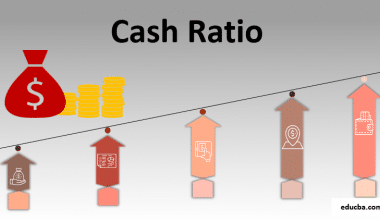IT Service Desk is a ticket management solution that enables businesses to create strong and efficient processes for internal and customer-facing support teams. This system allows MSPs to keep track of tickets raised by users, respond to them, reassign them to the appropriate department or organization, and generate reports, among other things. Here, you’ll learn all you need to know about IT service desk, including the job description and salary of an IT service desk analyst, as well as some basic software to get you started.
What Is an IT Service Desk?
The IT service desk is the operational arm of an organization’s IT department, responsible for ensuring that operations run smoothly.
IT service desks manage everything from simple technical issues to large-scale system outages, acting as a single point of contact (SPOC) allowing IT users to engage with the organization’s IT branch in a seamless and easy manner.
Key Benefits Of The IT Service Desk
#1. Align It with Business Processes/Departments
Service desks allow communication and collaboration between IT and other departments, assisting in the resolution and even prevention of preventable errors and breakdowns by assisting you in the creation, assignment, tracking, and resolution of tickets.
#2. Improve Asset Management
Service desks serve as a central repository for all of your organization’s hardware and software assets, as well as any applicable contracts, allowing for easy information retrieval, asset assessment, configuration, and maintenance, among other things.
#3. Improve operational efficiency
IT Service desks standardize IT procedures in accordance with ITIL (ITSM best practices), allowing for improved IT-related strategic planning and tracking.
Service desks collect and retain data from issues, products, and performance results, allowing for faster analysis that drives wiser IT decisions.
The service desk serves as the principal interface between the company and the technology with which it interacts. It is the driving force that enables firms to leverage technological breakthroughs to boost productivity and provide updated, usable, and secure 21st-century workflows.
IT Service Desk Features
The multi-purpose role that IT service desks play inside every organization necessitates the use of a variety of apps that go beyond standard tech assistance and management. As a result, IT service desk software typically has the following capabilities:
Ticket Control. Allows for the automatic prioritization, assignment, and monitoring of incidents and issues presented via various channels for speedier resolution.
Management of SLAs. Assists in ticket prioritization based on SLAs and determining if escalation or deadlines should define management rules.
Management of tasks, problems, assets, releases, contracts, and changes. Tasks and issues are organized to enhance cooperation, prevent disruptions, and enable smooth transitions and product launches, all while benefiting from 360-degree view of all your IT and business assets.
A knowledge base and a customer service portal are available. Creates a database of pertinent information, FAQs, and instructions to encourage self-service and self-help, resulting in speedier problem resolution. As a first step, IT users with common questions and concerns are routed to the knowledge base.
Service Manual. A centralized location that provides information about available services to various corporate units. The catalog also includes a form for users to fill out in order to submit a ticket.
Dashboards. Allows for comprehensive view of real-time and historical data to aid in the optimization of performance, productivity, effectiveness, and other processes.
Automation. Ensures that basic chores are always completed, freeing up support employees to work on unique and complex tasks.
Analytics. Gathers and analyzes all relevant data in order to generate actionable insights that can improve service desk performance and results.
Use Cases for the IT Service Desk
Any organization that uses technology in some capacity will require – and use – an IT service desk, though their exact requirements from said service desk will vary depending on what their technology is designed to do. Here are a few examples of common applications:
#1. Spending Less on Technology
The service desk can assist firms in saving money on technology by directing IT budgets to the areas where they are most required.
#2. Response to Downtime in a timely manner
A strong service desk system collects historical data on the organization’s technology and processes, allowing for the discovery, early detection, and prevention of probable errors and malfunctions, considerably reducing downtime.
#3. Organizational Change Management
Service desks can be used to automate notifications, schedule change procedures, and assign transitional responsibilities to IT users.
#4. Basic Incident Response
In addition to offering a conduit for more efficient incident management, service desks enable self-service via a knowledge base, which drives resolution higher.
Job Description for an IT Service Desk Analyst
An IT Service Desk Analyst is a specialist who gives customers technical help and assistance over the phone or in person. Their primary goal is to ensure a client’s satisfaction and ability to operate any machinery or technology that they may be having difficulty with.
The responsibilities of an IT service desk analyst include:
- Serving as the primary point of contact for consumers who call or email for technical assistance
- Remote troubleshooting via diagnostic procedures and important questions
- Choosing the best solution based on the problem and the information provided by customers
Job description
To grasp the problem and convey its solution, an exceptional IT service desk analyst must have good technical understanding and be able to communicate effectively. To cope with challenging customers, they must also be customer-oriented and patient.
The goal is to provide value to clients while also protecting the company’s reputation and business.
Responsibilities
- Serve as the first point of contact for clients who call or email for technical assistance.
- Use diagnostic procedures and necessary queries to perform remote troubleshooting.
- Determine the best solution based on the problem and the information provided by customers.
- Take the customer through the process of problem-solving.
- Send unresolved issues to the next level of support.
- Give accurate information about IT products and services.
- Log occurrences and problems, as well as their resolution.
- Follow up with customers and update their status and information.
- Forward customers’ feedback and recommendations to the appropriate internal staff.
- Identify and recommend procedural improvements
Qualifications and abilities
- Demonstrated experience as a help desk technician or in another customer service role
- Knowledge of office automation products, databases, and remote control is required.
- Excellent knowledge of computer systems, mobile devices, and other technological products
- Ability to analyze and address fundamental technological issues
- English proficiency
- Outstanding communication abilities
- Customer-focused and cool-headed
- BSc/BA in Information Technology, Computer Science, or a related discipline
Salary of an IT Service Desk Analyst in the United States
The average IT Service Desk Analyst salary in the United States $56,612, with a salary range of $51,098 to $63,342. Salary ranges can vary greatly depending on a variety of things, including schooling, certifications, supplementary talents, and the number of years you have worked in your field.
IT Service Desk Software
Implementing the right IT Service Desk Software can mean the difference between a successful service desk and one that fails. To best position your organization’s service desk for success, you’ll need a software solution that can handle the everyday workload of your demanding environment.
To start your search, you need to be aware of at least some of your options. Here is a list of some of the top IT service desk software solutions currently available on the market.
#1. HelpScout
Help Scout is a comprehensive customer support platform that provides all of the tools you need to provide an exceptional client experience. When you join Help Scout, you gain access to a variety of tools.
Help Scout’s shared inboxes contain collaboration capabilities such as @mentions and private notes for asking for assistance or adding insight to a client discussion.
Collision detection is also available to reduce duplicate effort, as are workflows to automate routing and routine operations.
Finally, saved replies make it simple to respond to routine customer inquiries.
You can use Docs to create, manage, and organize self-service material.
The WYSIWYG editor simplifies content generation. To develop even more sophisticated self-service content, you may upload videos, photos, and other types of information directly to articles or embed videos.
Data on performance allows you to see which articles are performing the best, which could be performing better, and what content you should generate next.
#2. SysAid
SysAid is a ticketing system for service desks that processes internal IT requests. To lower SLAs, they provide a range of SLA management capabilities such as ticket and workflow automation. You can also create a knowledge management self-service portal so that staff can handle simple requests like password resets on their own.
You may get started fast with a variety of templates and default forms, or you can design your own bespoke ones to better serve the needs of your company and team. Because most IT tools are used in tandem, you also gain access to a number of third-party integrations.
SysAid includes sophisticated asset management tools that make it simple to manage all of your network’s assets and see hardware and software for each of your end users.
#3. Hiver
Hiver is best thought of as an extension to your Gmail account. It allows you to leave internal notes on talks and even assign discussions to individual agents.
Hiver also provides some reporting to help you better assess team performance and acquire insights into the most common reasons clients contact you.
It’s worth mentioning that, unlike the majority of the other tools on this list, Hiver doesn’t contain any further tools beyond a shared inbox, which may limit its capacity to scale with your team. Furthermore, some basic features, such as reporting, are only available on their more expensive plans.
#4. Freshdesk
Freshdesk is a multi-purpose service desk software that is ideal for larger teams, particularly those in call centers.
When you sign up, you gain access to tools for managing support requests such as a shared inbox, a knowledge base, and chat capabilities. You also get inbound minutes to manage consumer phone calls (the number of minutes varies depending on the package you choose).
You also receive third-party integrations to keep your support tech stack connected. Although powerful, Freshdesk’s pricing/plans can be perplexing due to the numerous optional add-ons. Furthermore, the above-mentioned features are only available on their higher-tier omnichannel plans.
#5. Jira
Jira Service Desk is commonly linked with engineering teams, but it is also used by many support teams as a location to submit and monitor defects.
Users can design custom processes and forms to ensure projects operate well, and they can assign statuses to specific tasks to keep everyone informed. Reports can provide support representatives with insights into what’s being worked on and the overall workload, providing more context to bug-tracking and requests.
#6. Zendesk
Almost everyone who works in customer service has heard of Zendesk. They create a multi-channel support system with features such as a shared inbox, a knowledge base, and live chat tools.
In addition to these, they provide some more complex AI-based solutions for chatbots and autoresponders (albeit these are only available on their more expensive plans).
You also get a slew of productivity and automation tools, as well as over 1,000+ integrations to connect with other technologies in your support ecosystem. To be honest, there isn’t much Zendesk doesn’t do or communication methods it doesn’t support.
However, it is a very complex and complicated product that requires a significant amount of time, energy, and resources to get up and running.
This adds significant additional expenditures on top of the monthly charge, and because most teams don’t require access to all of the capabilities Zendesk provides (do you really need to run those community forums? ), it’s extremely conceivable they could find a solution that meets their needs for less money.
#7. Zoho
You may be familiar with Zoho as a customer relationship management tool, but they also provide a customer support solution.
Zoho Desk contains many of the expected features, such as a shared mailbox and a knowledge base tool. They also provide more advanced services such as AI-assisted response and complex automation for discussion sorting and tagging.
If you already use other Zoho products, such as the CRM tool, Zoho Desk connects effortlessly. However, their more advanced features, as well as some basic ones like live chat, are only available on their most expensive enterprise plan, which may be out of reach for some teams.
#8. Front
To accept support client tickets, most teams utilize a group email address when engaging with customers. Some teams, however, prefer to communicate via personal email addresses while still requiring the functionality of help desk software. Front allows you to do just that.
Front allows you to link your email, SMS, and social network accounts to a single inbox. It also has productivity tools such as internal notes and various automation options to reduce human effort. They also provide certain analytics and integrations, but only on their more expensive services.
#9. Gorgias
Gorgias is an e-commerce-focused help desk solution. It provides users with access to a shared email, knowledge base, and live chat facility. The integrations with Shopify, Magento, and BigCommerce set it apart from the other options on the list (albeit the Magento connector is only available on the higher-tier subscription).
Through those integrations, you can view order details, edit orders, and even issue refunds directly from your help desk, saving your team a lot of time and effort. However, one significant disadvantage is that all of their plans have ticket limits, which means your costs may vary month to month depending on volume.
To give you an idea, their base package covers 350 monthly support tickets, which works out to about 12 tickets each day – a figure that most teams would well exceed. Following that, you’ll be charged an additional $25 per 100 tickets.
What Makes a Good IT Service Desk?
- Empathy
- Active listening
- Patience
- Sincerity ·
- Communication
- Technical Skill ·
- Follow up
- Creativity
What Skills Are Required For IT Service Desk Executives?
- Communication Skills
- Analytical Skills
- Project Management Skills
- Cybersecurity Skills
- Hardware and Software Skills
Is IT Service Desk Difficult?
Along with a few other jobs, the IT service desk is regarded as one of the most difficult/stressful.
How Do I Run A Successful IT Service Desk?
- Utilize your service desk software to the fullest extent possible.
- Stop treating your IT teams as “catch-alls”
- Create a customer portal.
- Learn about SLAs.
- Customers should be encouraged to self-serve.
- Examine the big picture and track your progress.
To Summarize
The contemporary IT service desk’s extensive breadth makes it a critical component of every organization’s technology strategy. Service desks are required and used by almost any organization that interacts with technology as part of its operational procedures. They serve as the central point of contact for technology use throughout the business. As a result, choosing the proper software will allow your service desk to handle all service desk activities more quickly, easily, and satisfactorily.
Related Articles
- SERVICE DESK: Definition, Role, Software, Difference & Guide
- SERVICE DESK ANALYST: Definition, Duties, Salary, Interview Question & Resume
- WHAT IS A HELP DESK? Examples and Software Solution
- 10 BEST CUSTOMER EXPERIENCE MANAGEMENT SOFTWARE IN 2023






